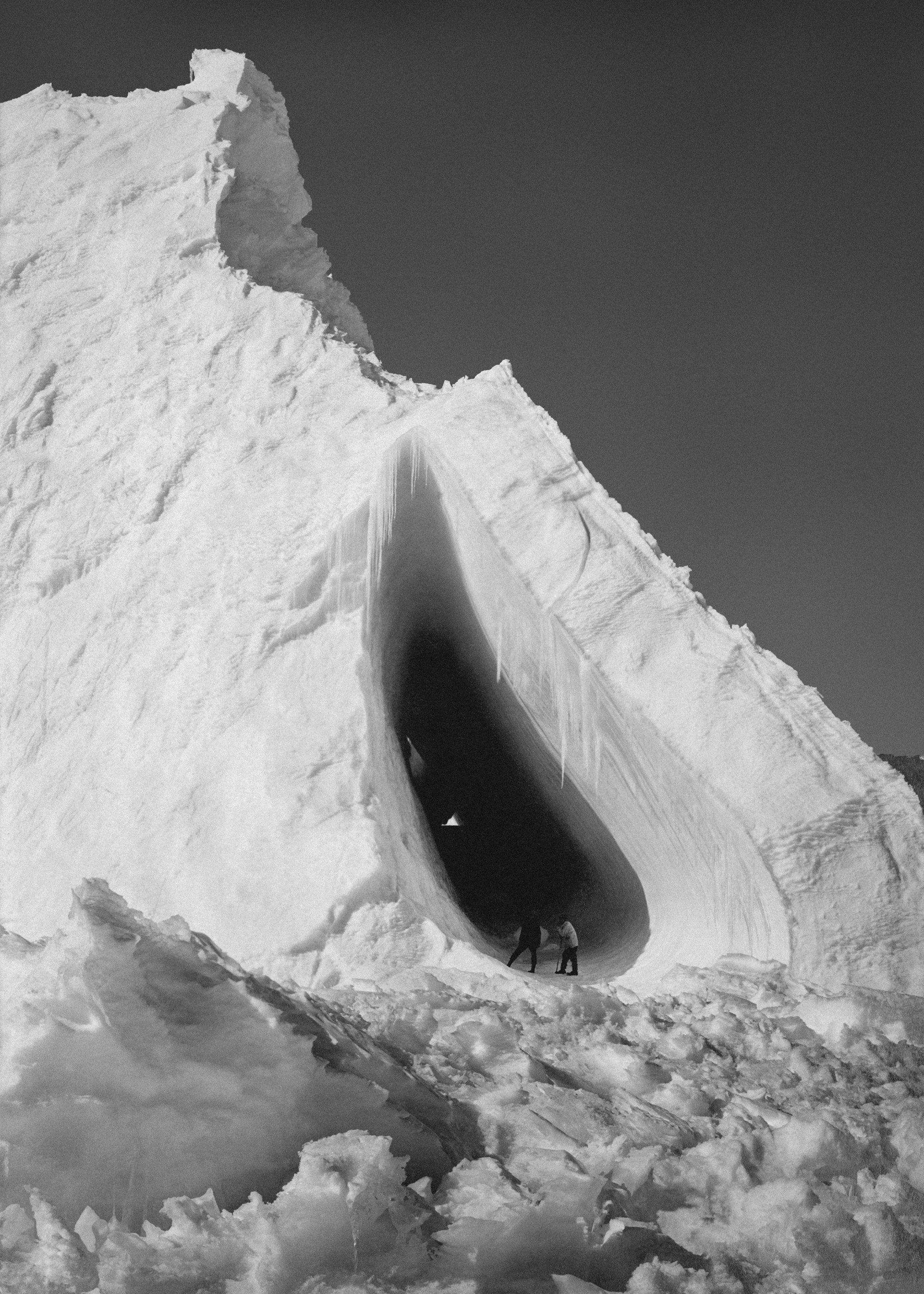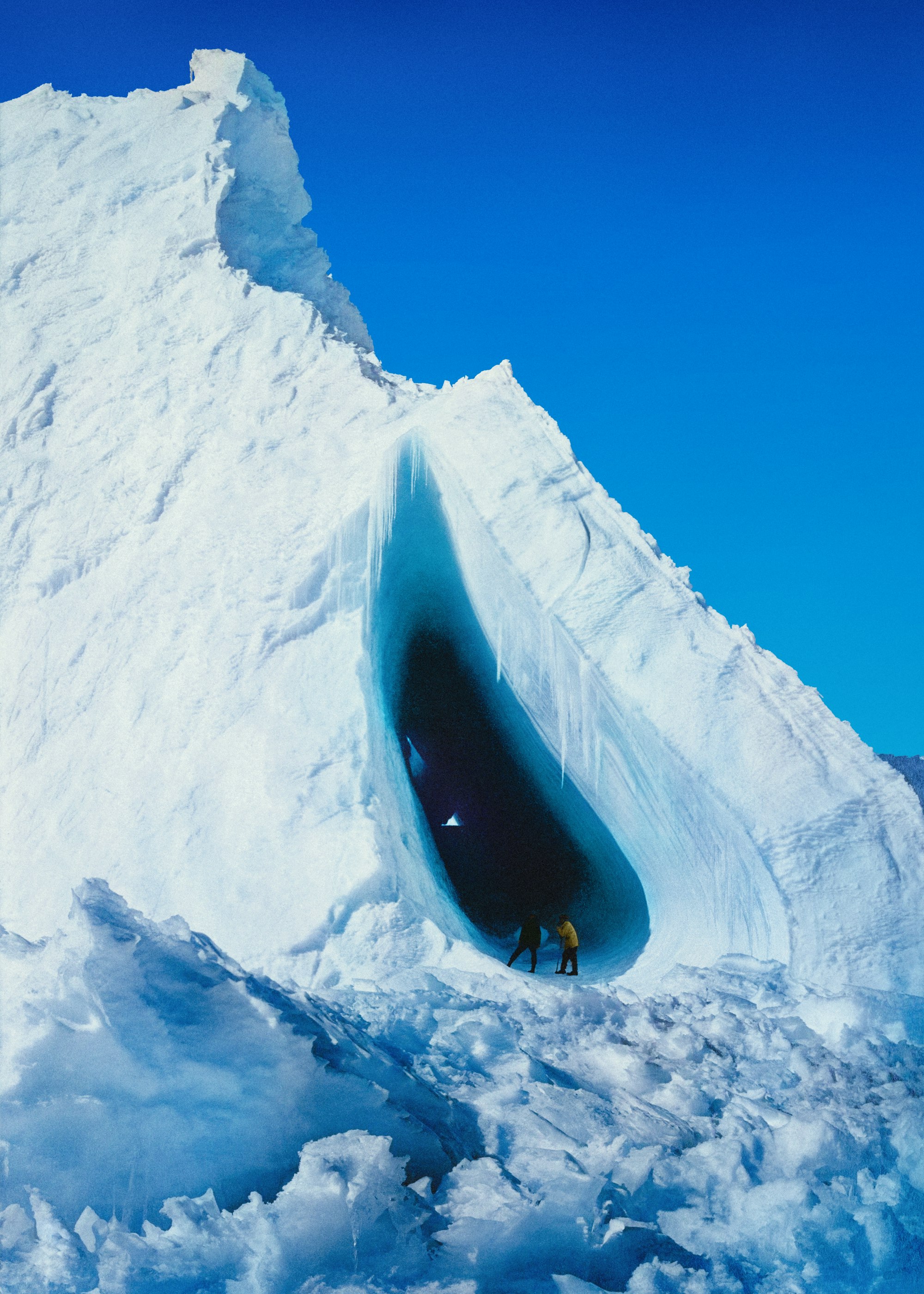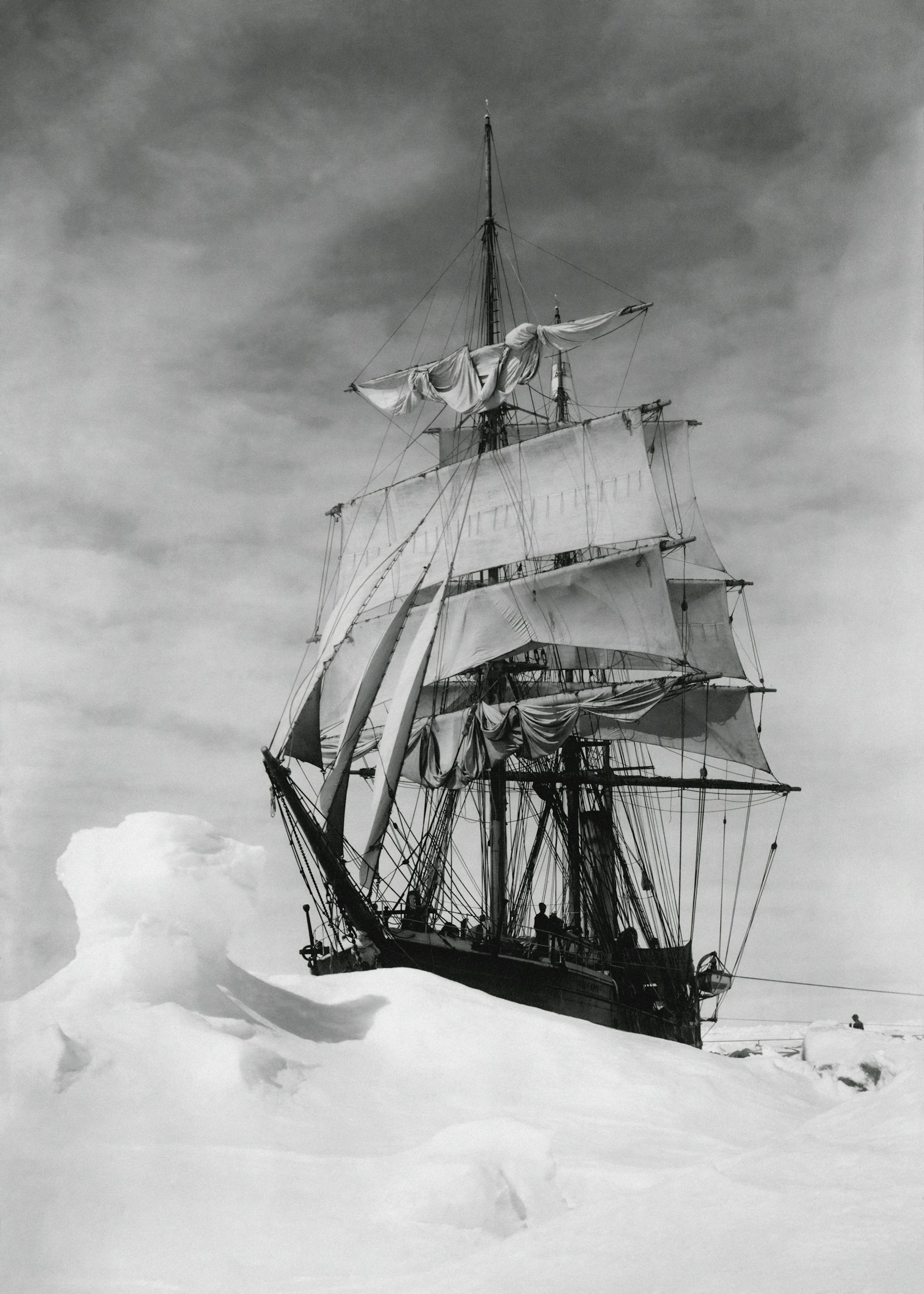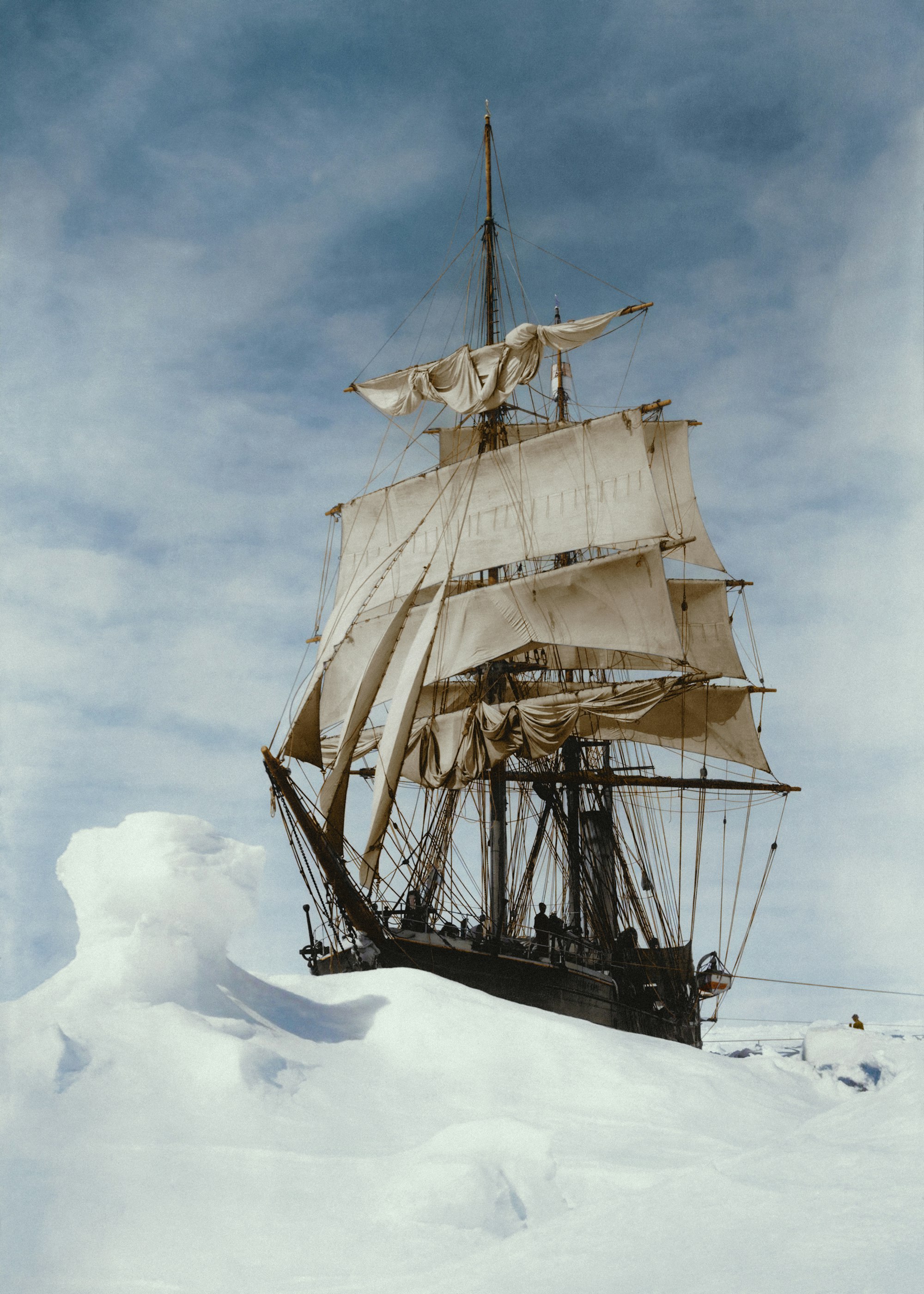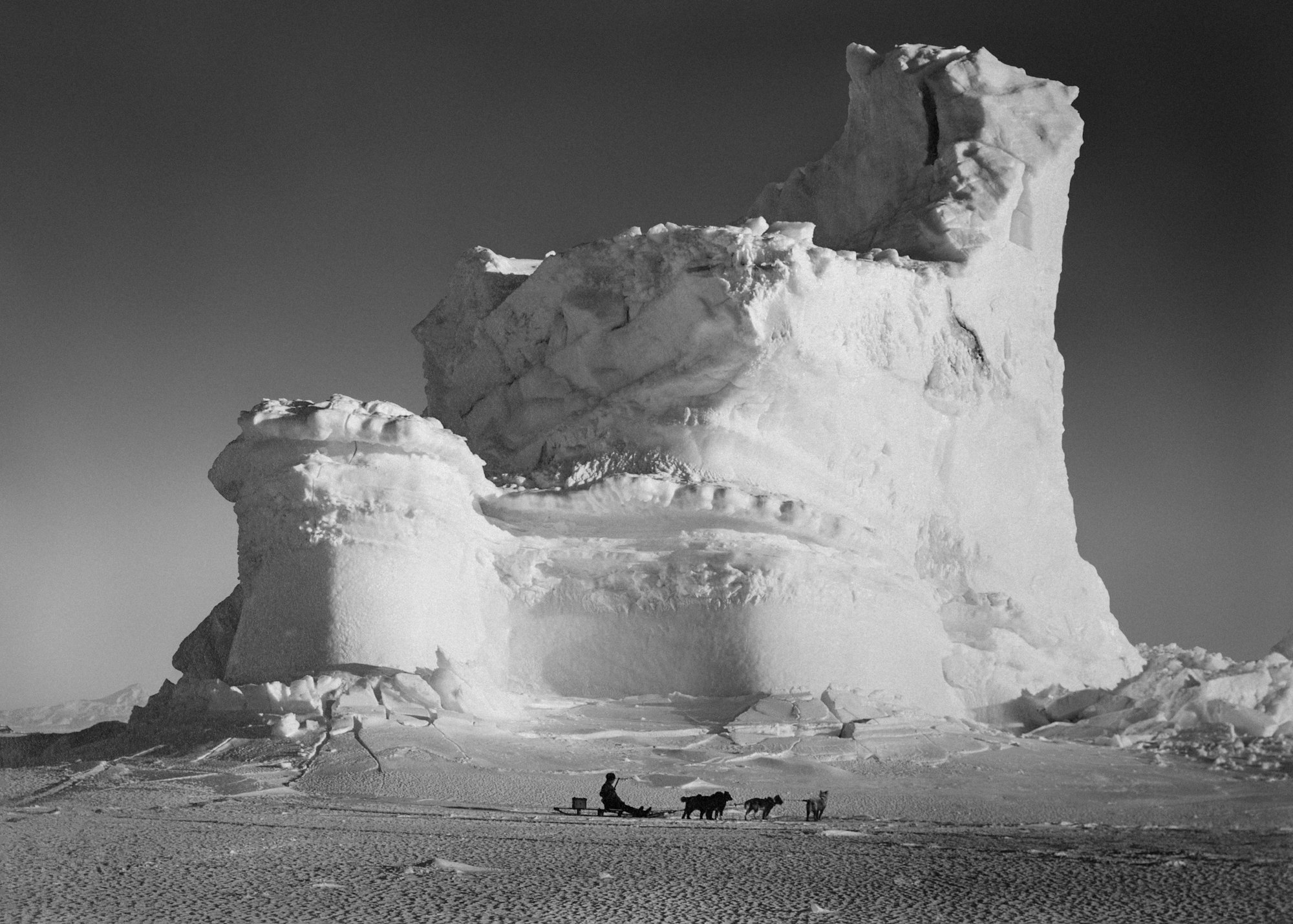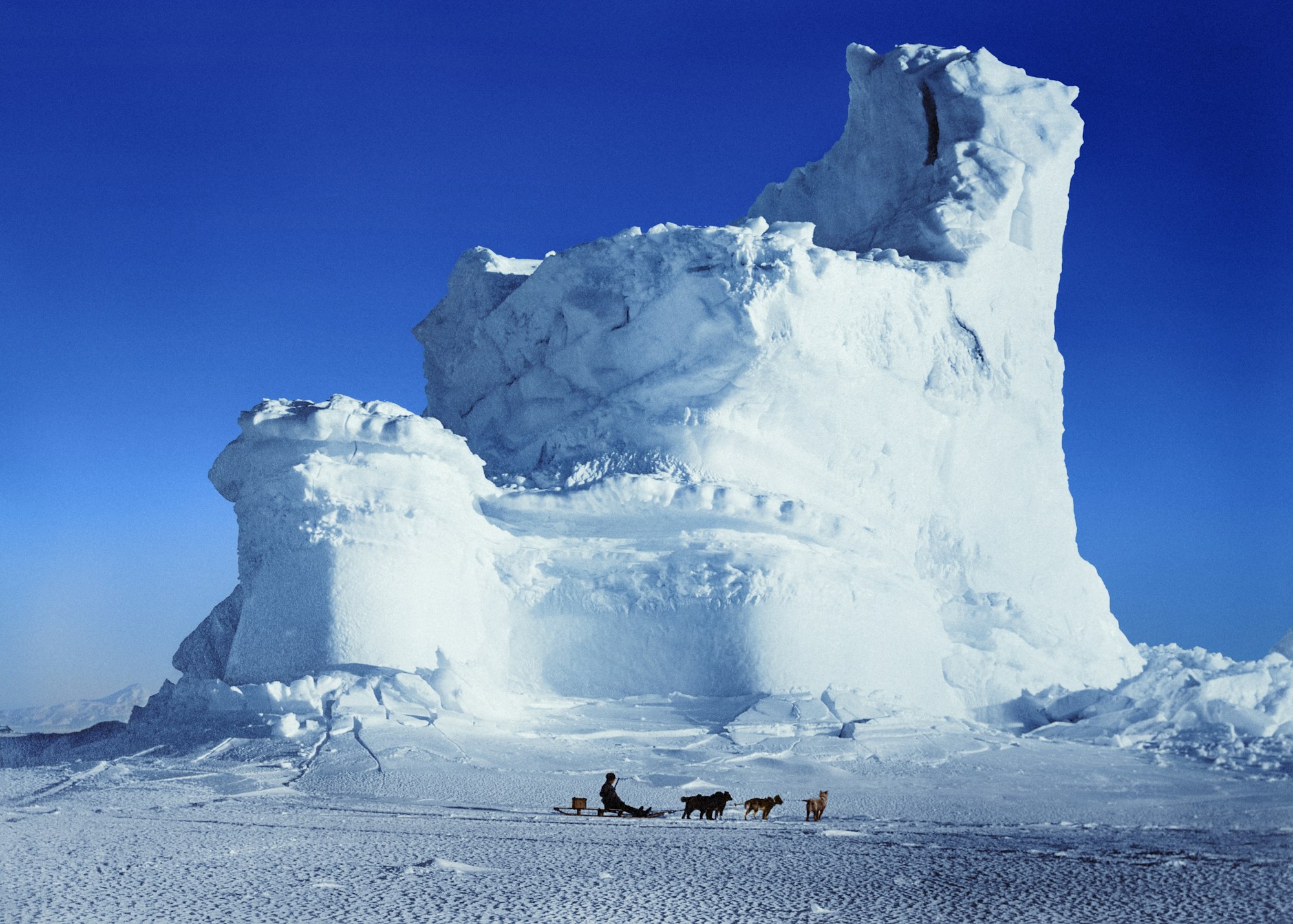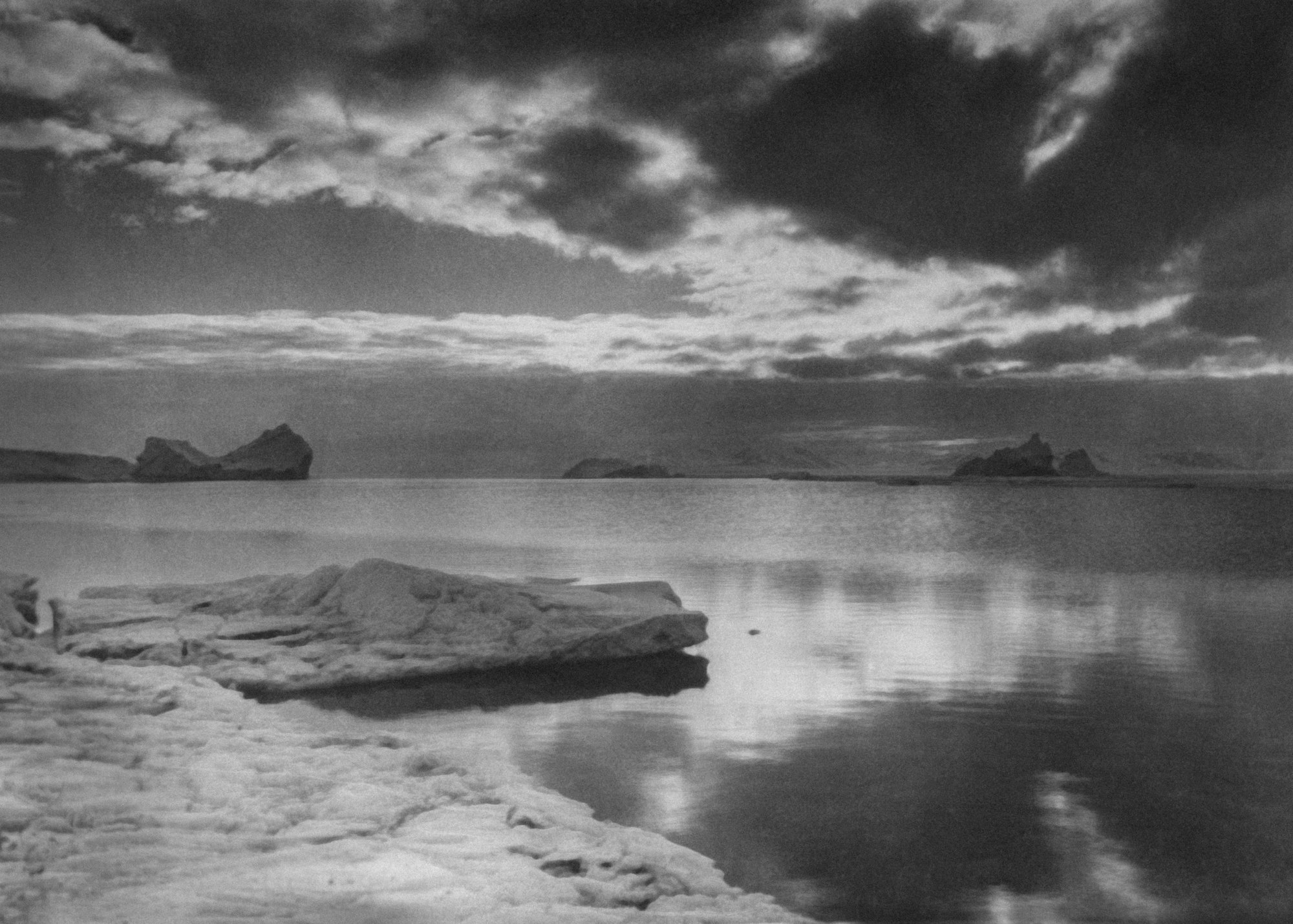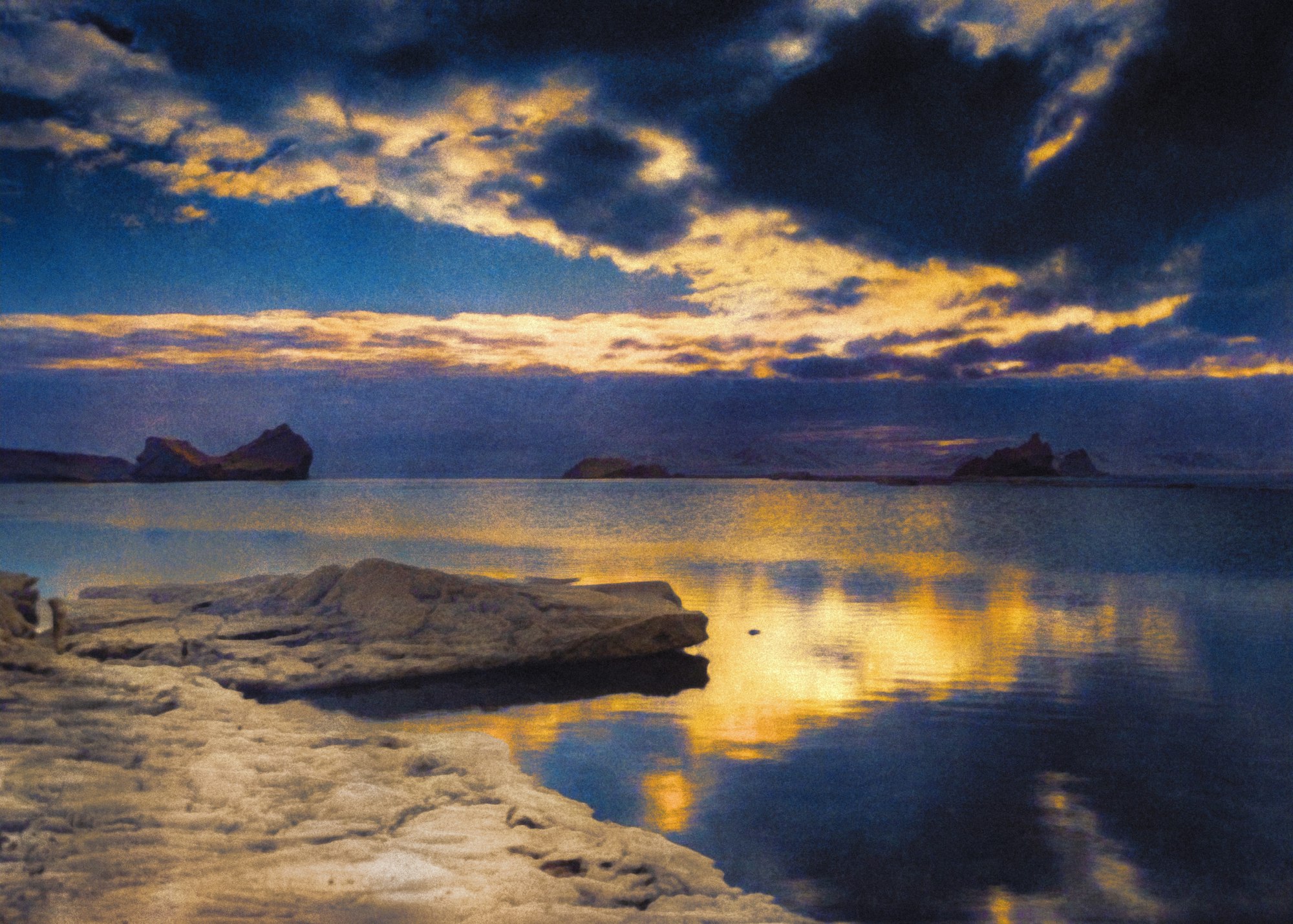Unseen History: Herbert Ponting's colorized Antarctic images
Words by Peter Moore, The Sunday Times Bestselling author of Endeavour: The Ship and the Attitude that Changed the World
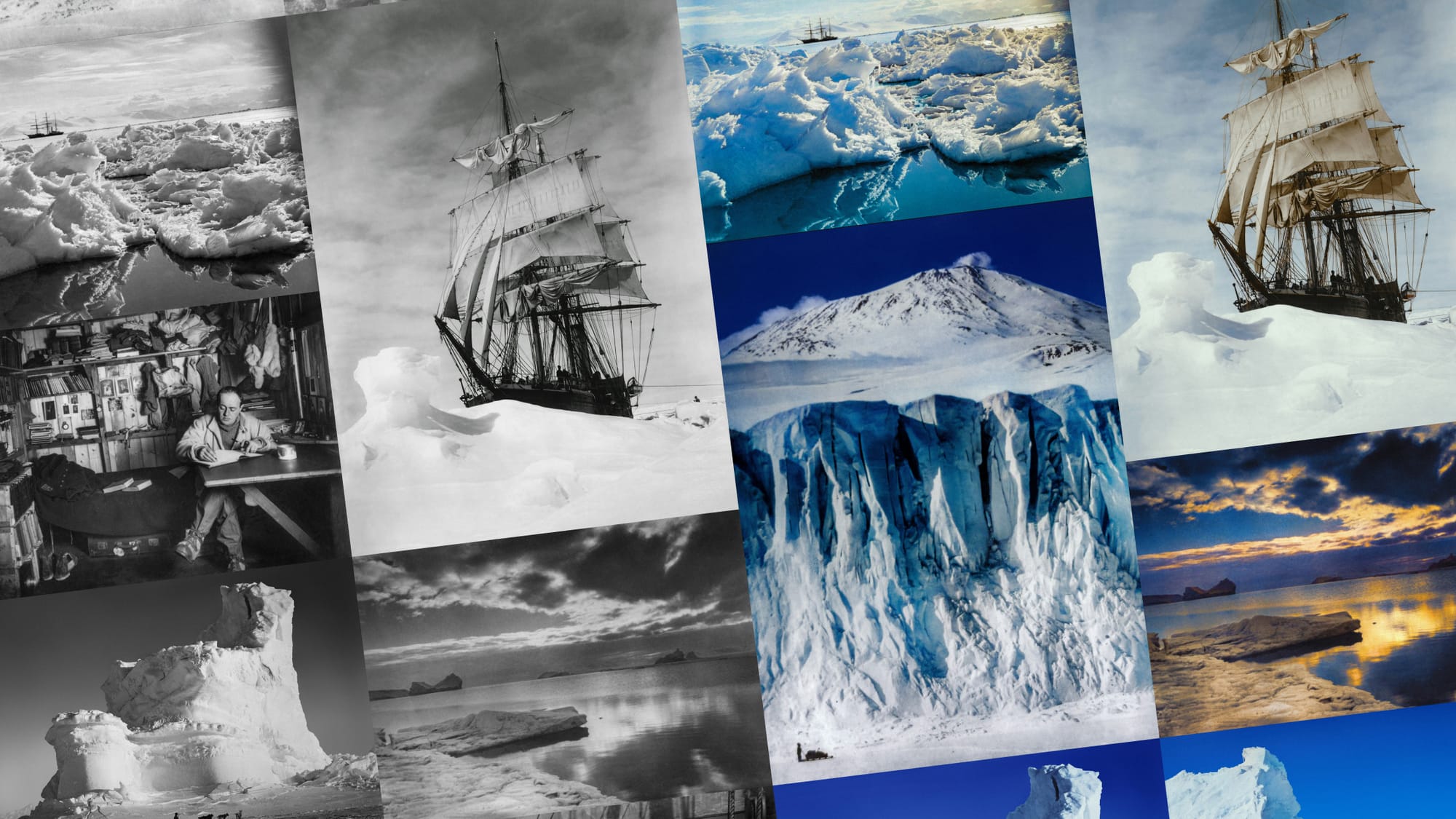
One of the great months in photographic history came in January 1911. It was then that Herbert Ponting, the official photographer on Robert Falcon Scott’s ill-fated ‘Terra Nova Expedition’ to the South Pole, first set foot in Antarctica.
Over the weeks that followed Ponting took many of his career-defining shots. One showed the Terra Nova exploration vessel anchored in the icy shallows of McMurdo Sound. Another framed the ship once again, but this time from inside an enchanting ‘ice grotto’ that was filled with vivid blues and greens. Yet another was a brilliantly composed view of the ramparts of Mount Erebus. It showed great, craggy towers of ice that rose high into the Polar sky and hung ominously over the frail figure of a man with a sled beneath.
At Unseen Histories, we work at the intersection of history and photography. You might well have seen some of our previous sets on Unsplash, which, among other subjects, depict the Civil Rights Movement of the 1960s and the March on Washington.
Ponting’s photographs are of a different nature, but they have always been of great interest to us. Recently, with the anniversary of Robert Falcon Scott’s tragic death approaching (29 March) we decided that the time had come to research Ponting’s story in more detail and to create a new set of remastered and colorized images.
Public domain images of Ponting’s photographs are held by the Library of Congress, allowing us the opportunity to work on them. In doing so we felt that we were working within the spirit of Ponting himself. Color, after all, was something that interested him. When he set off on the Terra Nova in November 1910 he carried a box of Autochrome plates with him, but at that point the technology was still in embryo. ‘Natural colours’, were beyond him.
Today, of course, the reality is very different. With careful research and an ability with digital software, it is possible to create faithful colorizations of black and white images. Here, for the very first time, more than a century after the expedition, we are presenting our view of what it was that Ponting really saw.
The colourizations are striking. There is a marked intensity to the Polar light. The view of the Terra Nova while caught in pack ice is particularly provoking. You can see the gleaming strakes of the hull and the creamy white sails of a ship newly out of port. The ‘Castle Berg’ rises up with all imaginable smoothness and majesty, demonstrating just why those on the Terra Nova Expedition considered it ‘the most wonderful iceberg ever reported in the Polar regions’.
Perhaps the most surprising image in the set is that entitled ‘Midnight Sun in the Antarctic’. In its original, black and white colors, the emphasis is all upon shape. But in the colorization, the eerie glare of the midnight sun – a characteristic of Antarctic summers – bathes the scene in a striking, yellowy light.
Pointing is widely regarded as one of the greats in photographic history. He is chiefly known for his simple but hugely effective compositions. We hope that with this set people can enjoy these compositions as ever, but that they can also see the great subject – Antarctica, ice, the Terra Nova – afresh.
To see the full collection, please visit our Unsplash profile here.
It is wonderful to showcase this work with Unsplash. For those of you who would like to find out more about the Unseen Histories Herbert Ponting images, you can read an immersive feature that examines the photographer, the photographs and the history, on our website.
As part of our Unsplash for Education initiative, we’re excited to continue working with institutions from around the world to promote their digital archives on Unsplash. If you’re interested in working with us, please reach out to partnerships@unsplash.com!

